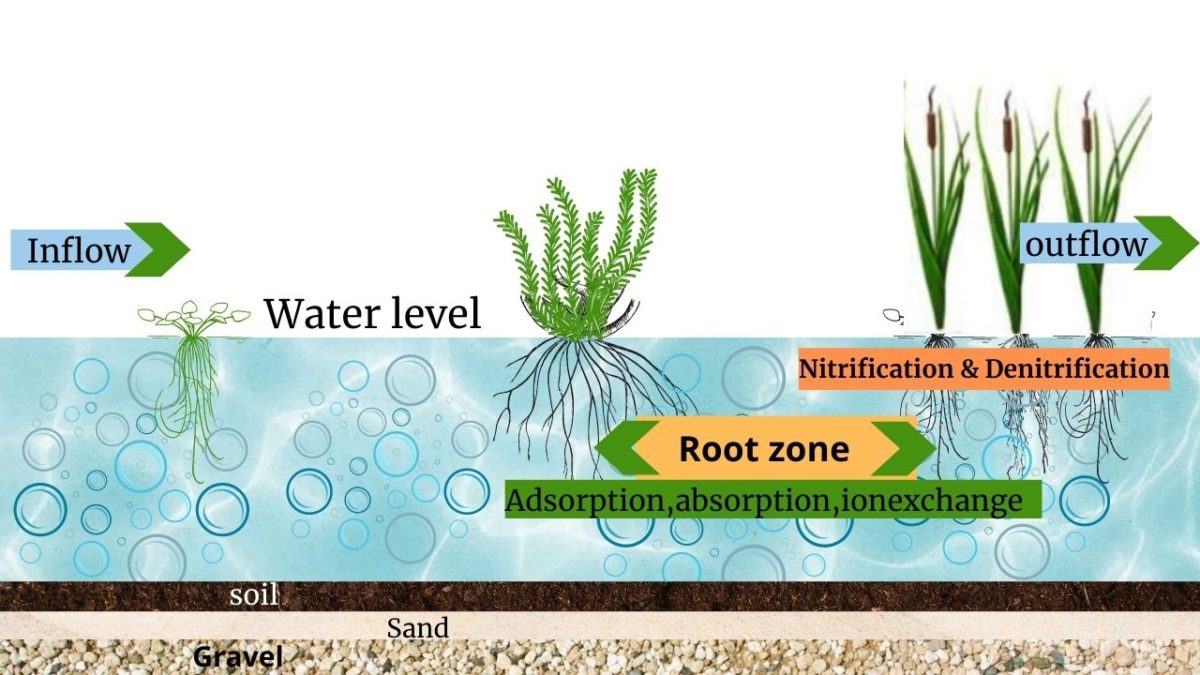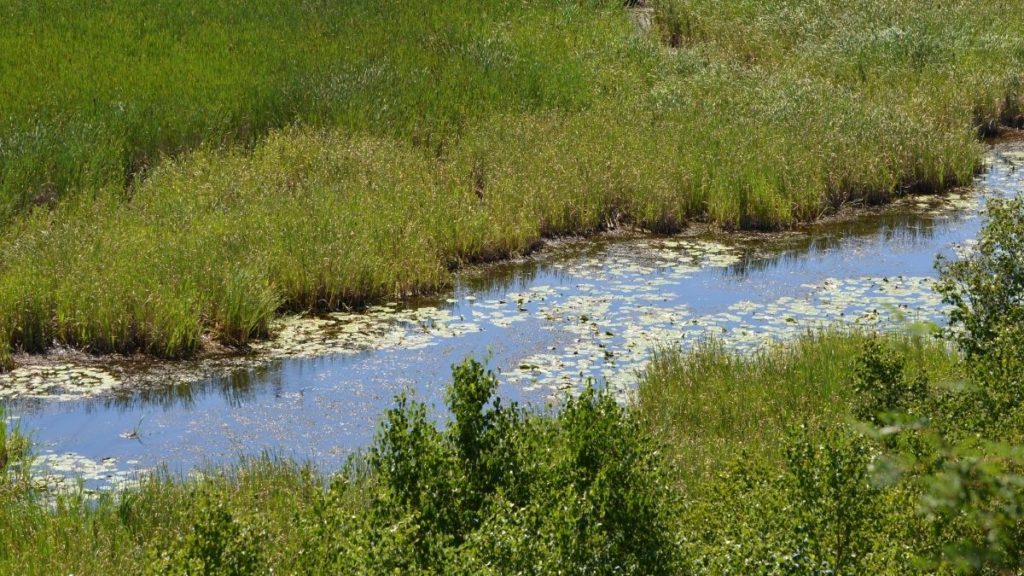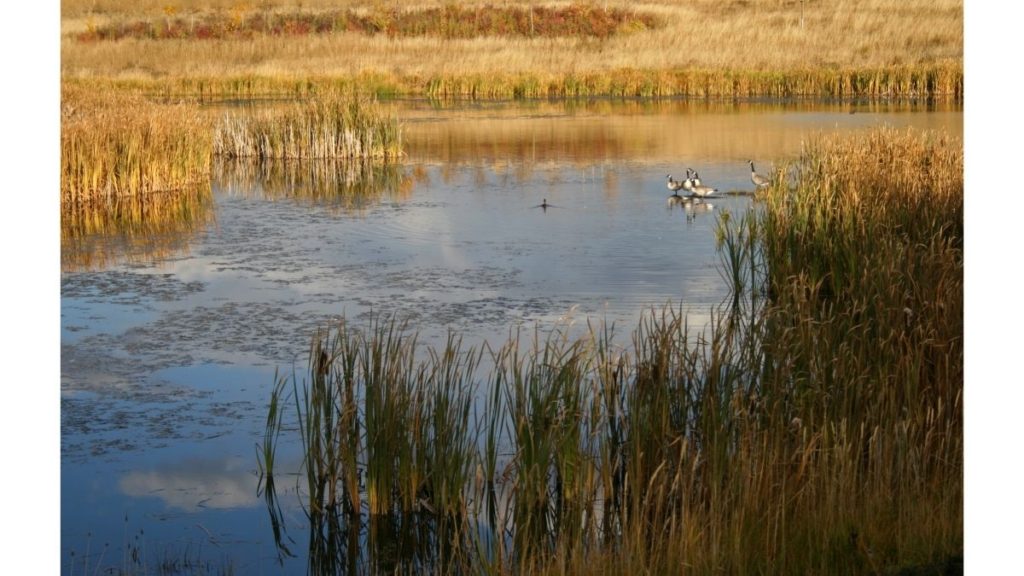Constructed wetlands are wastewater treatment systems that utilise natural processes such as plants, soil, and organisms to treat wastewater, greywater, or stormwater runoff from municipal or industrial sources. In this blog, let’s go for a trip exploring the different types of constructed wetlands and their mechanism.
Let’s get started by understanding the basics of a constructed wetland.
What are constructed wetlands?
Constructed wetlands are manmade wetlands that find applications in land reclamation after mining and compensating for natural areas lost to development. They operate as a biofilter and remove a variety of pollutants from the water such as organic substances, fertilisers, pathogens, and heavy metals. It can also eradicate pathogens (bacteria, viruses, protozoa, and helminths) to a certain extent.
Constructed Wetlands Components
There are three main components in constructed wetlands:
- An impermeable layer of Clay
- A Substrate layer of gravel
- Ground Vegetation Zone
The impermeable layer, which is often comprised of clay, inhibits pollutants from filtering into the lower aquifers. It is the bottom-most layer.
Above the impermeable layer lies the substrate layer. that nourishes and protects the root zone. The water passes through this layer and into the root zone. Bioremediation and denitrification take place in this layer with the help of bacteria present in the roots. The ground vegetative layer rests above the substrate layer.
In a wetland, vegetation offers a substrate (roots, stems, and leaves) for microbes to proliferate as they decompose organic matter. This microbial colony or the periphyton accomplishes around 90% of pollution removal and waste decomposition. When the plants degrade, they provide a carbon source for the microorganisms and eliminate roughly 7% to 10% of contaminants.
Also read : Secondary Treatment for Wastewater – Methods and Process
Pollutants Removal In Constructed Wetlands
- As wastewater flows through the wetland medium and the plant rhizomes, it undergoes treatment through various physical, chemical and biological processes.
- The oxygen which comes out of the rhizomes, roots, and rootlets, forms a thin layer surrounding each root hair.
- This creates aerobic conditions for the aerobes to act. Along with the aerobic bacteria, anaerobic bacteria also acts on the wastewater.
- Microbial nitrification and subsequent denitrification releases nitrogen gas. In the root-bed media, phosphorus coprecipitates with iron, aluminium, and calcium compounds.
- Filtration and adsorption by biofilms on the gravel or sand media reduces the harmful bacteria and viruses.
Nitrogen Removal
Ammonia present in the wastewater converts to ammonium ions. The aerobic bacterium Nitrosomonas sp. oxidizes these ammonium ions to nitrite. Nitrite converts to nitrate by the action of the the bacterium Nitrobacter sp. Finally, nitrate reduces to relatively harmless nitrogen gas under anaerobic conditions. It then enters the atmosphere.
Phosphorus Removal
Phosphorus removal and storage occurs within the constructed wetland itself since the phosphorus cycle is closed and there is no release of it into the atmosphere. A wetland system sequesters phosphorus by:
- Incorporating phosphorus into living biomass and thereby becoming a part of the organic matter present in living beings.
- Precipitation of phosphorus as insoluble phosphates with ferric iron, calcium, and aluminium compounds found in wetland soil.
Constructed Wetlands Types
The following are the three primary types of built wetlands:
- Subsurface flow constructed wetland
- Surface flow constructed wetland
- Floating treatment wetland
Let’s have a closer look at each one of them.
Subsurface Flow Wetlands
There is no water surfacing in subsurface flow constructed wetlands because wastewater flows through the roots of the plants which lies below the gravel. As a result, these types of constructed wetlands offer the following advantages:
- The system is more efficient
- Attract fewer mosquitoes and flies.
- Emit less stink.
- Less susceptible to cold temperatures.
- Water purification takes up lesser space.
There are two types of subsurface flow constructed wetlands: Horizontal flow and vertical flow constructed wetlands
Horizontal Flow Constructed Wetlands
The effluent in the horizontal flow built wetland moves horizontally and parallel to the surface. Absence of surface water, preventing mosquito breeding. Subsurface flow wetlands can treat a variety of different wastewaters, such as household wastewater, agricultural, paper mill wastewater, mining runoff, tannery or meat processing wastes, stormwater.
Vertical Flow Constructed Wetlands
A vertical flow constructed wetland is a planted filter bed with a bottom drain. A mechanical dosing system pours or doses wastewater onto the surface from above. Water runs down vertically through the substrate layer to the basin’s bottom, where it is collected in a drainage pipe. In comparison to horizontal flow constructed wetlands, vertical flow constructed wetlands are more efficient and use less space.
Also read : Activated Sludge Process – Stages and Process Control
Surface Flow Wetlands
Surface flow wetlands resemble wastewater treatment ponds in appearance such as “waste stabilisation ponds”. They find applications in tertiary treatment, wastewater treatment plant effluent polishing and stormwater runoff treatment
Along with natural decay, predation by higher species, pathogens die by UV radiation due to the exposure of water to direct sunlight, . The soil layer beneath the water is anaerobic, but the roots of the plants produce oxygen, allowing complex biological and chemical interactions to take place.
A wide range of soil types, including bay mud and various silty clays, can support surface flow wetlands.Plants like Water Hyacinth (Eichhornia crassipes) and Pontederia spp. are employed.
- Surface flow constructed wetlands, on the other hand, may increase mosquito breeding.
- They also produce a lot of algae, which degrades the effluent quality.
- In comparison to subsurface flow built wetlands, they require a larger area to cleanse water.
- They have a stronger odour and lesser performance in the winter.
Floating treatment wetlands
The floating treatment wetlands (FTWs) are artificial wetlands that replicate natural ones. Floating rafts support hydroponically grown plants in FTWs. The rafts float on the surface of a wet pond and they improve water quality by filtering, consuming, or breaking down contaminants (such as nutrients, silt, and metals) in the water.
Shall we wrap up?
Conclusion
Due to the self-sustaining nature of the constructed wetlands they have a significantly lower lifetime costs compared to the conventional treatment systems. Hence they provide an economical and nature-friendly option for wastewater treatment.
So, how was the trip? Let us know in the comments.



